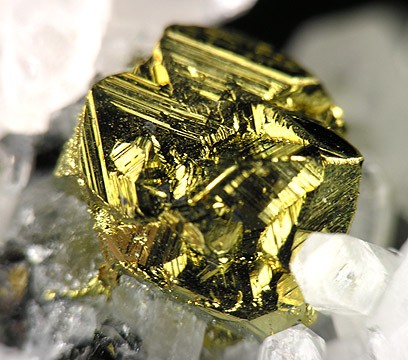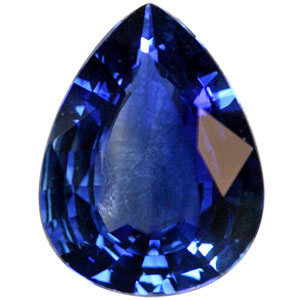Difference Between the key difference between metallic and nonmetallic minerals
Table of Contents
Key Difference – Metallic vs. Nonmetallic Minerals
A mineral is a naturally occurring solid and inorganic constituent with a definite chemical formula and has a crystal structure. They are natural geological materials that are mined for their economic and commercial value. They are used in their natural form or after isolation and purification either as raw materials or as ingredients in an extensive range of applications.Theses minerals can be classified into two major groups, and they are metallic minerals and non-metallic minerals. The Earth is made up of a combination of metallic and non-metallic elements. However, nonmetallic elements are more plentiful than metallic elements. The key difference between metallic and nonmetallic minerals is that metallic mineral is a combination of minerals that can be melted to gain new products whereas non-metallic minerals are a combination of minerals that do not produce new products on melting. Furthermore, metallic minerals are mainly derived from ores whereas nonmetallic minerals are mainly derived from industrial rocks and minerals. This article explores all the different chemical and physical properties between metallic minerals and non-metallic minerals.
What are Metallic Minerals?
Metallic minerals are solely minerals that comprise one or more metallic elements. They usually have glossy surfaces, are conductors of heat and electricity, and can be pounded into thin sheets or stretched into wires. They are mainly used to make tools and weapons. Metal minerals are deposited in gold nuggets, volcanic areas, sedimentary rocks and hot springs. When metallic minerals are excavated, they are known as ores, and ores must be handled further to isolate the metals. First the ore is crushed and then the metallic minerals are isolated from undesirable rock to produce a concentrate. This metals concentrate then must be separated from the non-metals residues or other impurities. Examples of metallic minerals are chalcopyrite (CuFeS2), Gold, Hematite (Fe2O3), Molybdenite (MoS2), Native copper (Cu), Pyrite (FeS2), and Sphalerite (Zn, FeS).

Chalcopyrite
What are Non-metallic Minerals?
Non-metallic minerals are naturally occurring combination of chemical elements that mostly lacks metallic attributes. These minerals are mainly comprised of carbon, phosphorus, sulfur, selenium, and iodine. Examples of nonmetallic minerals are limestone, dolomite, magnesite, phosphorite, talc, quartz, mica, clay, silica sand, gemstones, decorative and dimension stones, construction materials, etc. Non-metallic minerals are originated in rocks, ores, and gems. Rocks can be composed completely of non-mineral material. For example, coal is a sedimentary rock composed principally of naturally derived carbon. Gem minerals are frequently present in several different gemstones, for example, ruby and sapphire, etc.

Sapphire
What is the difference between Metallic and Nonmetallic Minerals?
Melting:
Metallic minerals can be melted to gain new products.
Non-metallic minerals do not produce new products on melting.
Heat and Electricity:
Metallic minerals are good conductors of heat and electricity.
Non-metallic minerals are good insulators of heat and electricity and poor conductors of heat and electricity.
Natural Abundance:
Ores have a high concentration of metallic minerals.
Rocks and gems have a high concentration of non-metallic minerals.
Abundance:
Metallic minerals are less abundance compare to non-metallic minerals.
Non-metallic are more abundance compare to metallic minerals.
Appearance:
Metallic minerals have a shiny or glossy appearance.
Non-metallic minerals have a submetallic or dull appearance. But gem minerals have attractive, unique colors.
Physical Properties:
Metallic minerals are ductile or malleable and when hit, they do not get broken into pieces.
Non-metallic minerals are not ductile and malleable, but they are brittle, when hit, they may get broken in to pieces. But there are some exceptions such as silica, gemstones and diamonds.
Examples:
Metallic minerals are generally associated with igneous rocks such as iron, copper, bauxite, tin, manganese, chalcopyrite (CuFeS2), Gold, Hematite (Fe2O3), Molybdenite (MoS2), Native copper (Cu), Pyrite (FeS2), and Sphalerite (Zn, FeS).
Non-metallic minerals are generally associated with sedimentary rocks such as coal, salt, clay, marble, limestone, magnesite, dolomite, phosphorite, talc, quartz, mica, clay, silica sand, gemstones, decorative and dimension stones, construction materials, kaolin, brine, calcite, lignite, limonite, mica, potash, rock phosphate, pyrite, radioactive minerals, soapstone, sulphur, rock salt, vermiculite and sulphur.
References
Busbey, A. B., Coenraads, R.E., Roots, D. and Willis, P. (2007). Rocks and Fossils. San Francisco: Fog City Press. ISBN 978-1-74089-632-0.
Chesterman, C. W. and Lowe, K. E. (2008). Field guide to North American rocks and minerals. Toronto: Random House of Canada. ISBN 0-394-50269-8.
Roussel, E. G., CambonBonavita, M., Querellou, J., Cragg, B. A., Prieur, D., Parkes, R. J. and Parkes, R. J. (2008). Extending the Sub-Sea-Floor Biosphere.Science, 320 (5879): 1046–1046.
Takai, K. (2010). Limits of life and the biosphere: Lessons from the detection of microorganisms in the deep sea and deep subsurface of the Earth. In Gargaud, M.; Lopez-Garcia, P.; Martin, H. Origins and Evolution of Life: An Astrobiological Perspective. Cambridge, UK: Cambridge University Press. pp. 469–486.
Image Courtesy:
1. “Chalcopyrite-Quartz-237645” by Rob Lavinsky, iRocks.com [CC-BY-SA-3.0] via Commons
2. Sapphire – Vod Shaqen By Thaneywaney (Own work) [CC BY-SA 3.0], via Wikimedia Commons
ncG1vNJzZmivp6x7pbXFn5yrnZ6YsqOx07CcnqZemLyue8OinZ%2Bdopq7pLGMm5ytr5Wau265xK2YpaSZmHqiusNmraxlnqS7rrHTmqOloZNiuqq6xKuYpatf